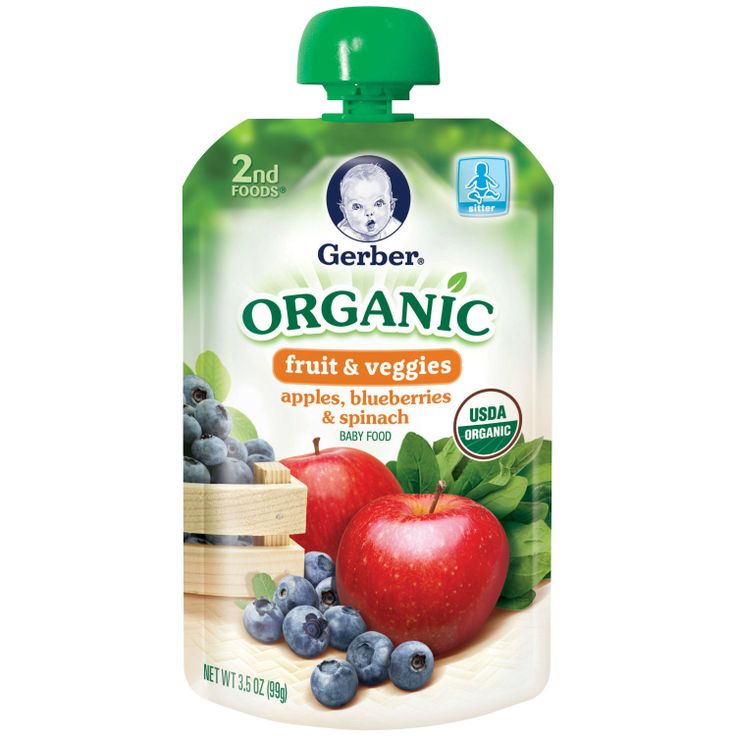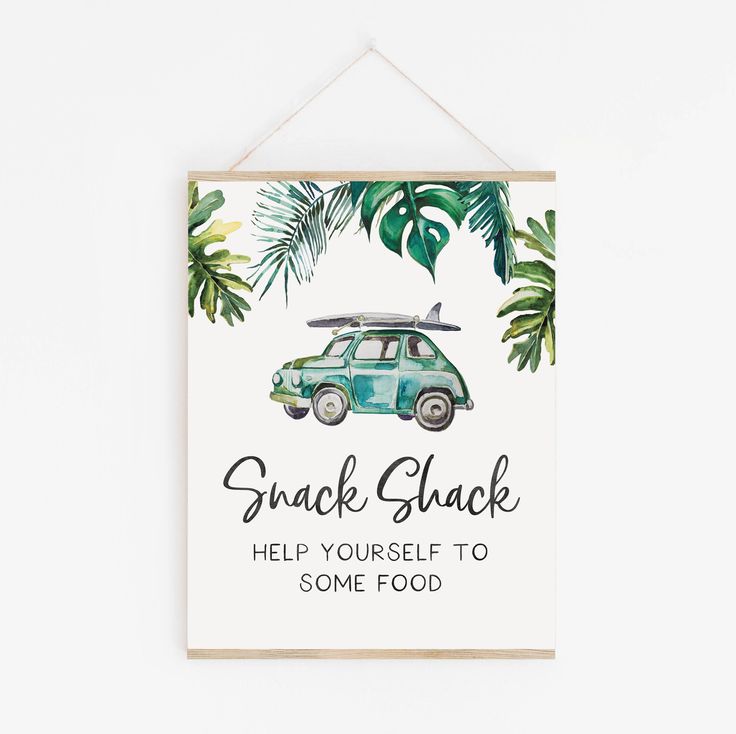Giving baby finger foods
Best Finger Foods for Babies: The Ultimate Guide
How exciting that your baby is about to graduate from mushy foods to finger foods! This is a big step in your little one’s development. However, you may be wondering when’s the right time to start finger foods, and how to tell that your baby is ready. We’ll answer all these questions and more, plus give you a list of the best finger foods to introduce to your baby first.
Introducing Finger Foods to Your Baby
So, when can babies eat finger foods? You can start to give your baby finger foods around the time they’re able to sit up independently and can bring their hands to their mouth. This may happen between the ages of 8 months old and 9 months old, but your baby may be ready a little sooner or later than this time.
Around this time, you may also notice that your baby is developing their pincer grasp and may be making chewing motions. These are both great indications that your baby’s ready for finger foods. Moreover, using their fingers to pick up foods will further develop your baby’s fine motor skills.
Some parents who adopt the baby-led weaning approach may start offering finger foods to their infants as early as 6 months old. This method skips spoon-feeding with solid foods and instead lets your baby take the lead in self-feeding with finger foods. Some believe this approach can decrease fussiness when it comes to introducing new foods, including finger foods, to your baby. Speak to your child’s healthcare provider if this method is something you’d like to try.
Giving your baby finger foods can help your little one learn to feed themself, just one step toward gaining independence. Self-feeding can be great fun for your baby. Even if much of the food doesn’t end up in your baby’s mouth, the fact that they’re exploring this new frontier is an accomplishment to be proud of.
First Finger Foods for Your Baby
As you begin choosing finger foods for your baby, check out the following ideas:
Steamed veggies like sweet potatoes, potatoes, carrots, green beans, peas
Soft, ripe fruits like bananas, berries, peaches (peeled), mangoes (peeled)
Whole-grain breakfast cereals (without nuts, clusters, or chunks)
Whole-grain pasta (cooked well)
Whole-wheat bread
Whole-grain crackers or wafers like teething biscuits
Soft meats like chicken
Cheese (mild)
Scrambled eggs.

Be sure that any of the above finger foods are cut into small pieces. You don’t want your baby eating a piece that’s too big to swallow. And, make sure to watch them while eating.
Finger Food Safety
During this time babies are more likely to swallow foods without chewing them, whether they have a few baby teeth coming in or they have no teeth. Avoid giving any finger foods that require a grinding action to chew (this type of chewing is typically mastered around the age of 4), as these may pose a choking risk. Offer finger foods that are soft, easy to swallow, and broken or cut into pieces that your baby cannot choke on. A good rule of thumb is that soft and mushy finger foods are safe for your baby. Small, round, coin-shaped, hard, chewy, crunchy, slippery, or sticky foods may lead to choking. Here are some foods to avoid offering your baby when they start on finger foods:
Peanut butter (in chunks)
Meat (in chunks)
Cheese (in chunks)
Raw veggies (in large chunks or round shapes), including celery sticks, carrot sticks, baby carrots, cherry tomatoes, and peas
Raw hard fruit (in large chunks or round shapes), including apples, pears, and grapes
Nuts (whole)
Seeds
Popcorn
Chewing gum
Candies (hard, gooey, or sticky)
Hot dogs or meat sticks.

There are ways you can still give some of the above foods while making them easier to eat and less hazardous to swallow. For example:
Grapes or cherry tomatoes, cut in half
Creamy peanut butter spread thinly on whole-grain bread that’s cut into small squares
Hot dog, cut lengthwise and then cut into small 1/2-inch pieces.
Note on Food Allergies
Medical experts once recommended that parents avoid feeding their babies eggs, fish, and peanut butter since babies may be allergic to these foods. However, it’s now recommended that you introduce these foods early—while keeping a close watch for any reactions—since this approach can help reduce your child’s chances of developing food allergies. Before introducing peanut butter or peanut products, consult with your baby’s healthcare provider. Your baby is more likely to be allergic to these foods if
food allergies run in your family
your baby is known to have an egg allergy
your baby has eczema.

The Bottom Line
It’s time to introduce finger foods to your baby when you see that they’re able to sit up on their own, start bringing their hands to their mouth, and can use a pincer grasp to hold onto small items, like finger foods. This development happens around the age of 8 or 9 months old, but you may see it sooner or later in your baby.
In the beginning, you’ll want to introduce finger foods that are soft and easy to swallow, since babies at this age tend to swallow instead of chew even if they have a few baby teeth. Think steamed veggies and soft fresh fruits. You can also introduce whole-grain bread, crackers, cereal, or pasta if they’re cut into small pieces. Chicken, mild cheese, and scrambled eggs are also great options when served in small pieces.
Avoid hard foods like raw veggies and fruits, as well as chunks of nut butter, cheese, and meat. Whole nuts and seeds are not recommended, nor are chewing gum, candies, hot dogs, or meat sticks.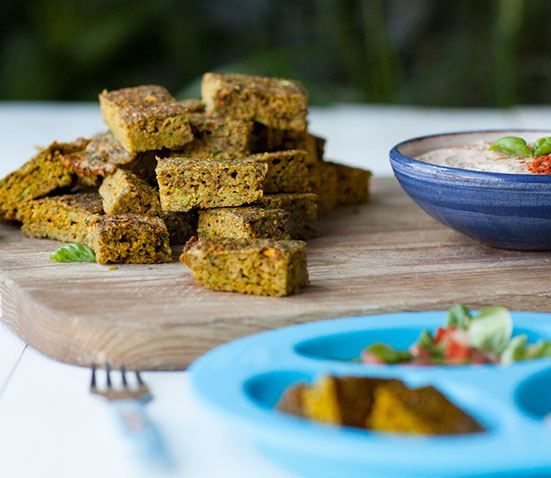 All these items can pose a choking hazard.
All these items can pose a choking hazard.
Transitioning to finger foods is a big step in your baby’s development and independence. Letting your baby self-feed with finger foods may be a bit messy at first, but you’ll both get the hang of it. Learn more about developmental milestones for your 9-month-old baby.
13 Best Finger Foods for Baby
Introducing finger foods for baby is an exciting and nerve-racking time. Between the mess, possible allergies and potential choking hazards, it’s enough to give some parents white knuckles as they hover over the high chair. But while you should certainly exercise caution, there are lots of great baby finger food ideas that will make mealtime fun and nutritious, and let your growing child practice the important art of self-feeding.
In this article:
When can babies eat finger foods?
Baby finger food safety
How to introduce new finger foods for baby
Best finger foods for baby
When Can Babies Eat Finger Foods?
There’s no hard and fast rule in terms of when babies can start eating finger foods, says William Dietz, MD, PhD, director of the Sumner M. Redstone Global Center for Prevention and Wellness at the Milken Institute School of Public Health at the George Washington University in Washington, DC, and co-editor of the American Pediatric Association’s (AAP) Nutrition: What Every Parent Needs to Know. Rather than focusing on baby’s age, says Dietz, “the first indicator you should look for is that the baby is interested.” So how can you tell when baby’s interest is piqued? Reaching for the food as you’re feeding her, grabbing the bowl or spoon, putting the spoon in her mouth and fussing when she sees you eat (because she wants in!) are all signs your child may be ready. “Babies generally want to feed themselves,” Dietz says. “That’s a normal drive.”
Redstone Global Center for Prevention and Wellness at the Milken Institute School of Public Health at the George Washington University in Washington, DC, and co-editor of the American Pediatric Association’s (AAP) Nutrition: What Every Parent Needs to Know. Rather than focusing on baby’s age, says Dietz, “the first indicator you should look for is that the baby is interested.” So how can you tell when baby’s interest is piqued? Reaching for the food as you’re feeding her, grabbing the bowl or spoon, putting the spoon in her mouth and fussing when she sees you eat (because she wants in!) are all signs your child may be ready. “Babies generally want to feed themselves,” Dietz says. “That’s a normal drive.”
Being able to sit independently is another good clue that babies are physically ready to try finger foods, says Susan M. McCormack, MA, senior speech language pathologist at Children’s Hospital of Philadelphia and a board-certified specialist in swallowing and swallowing disorders.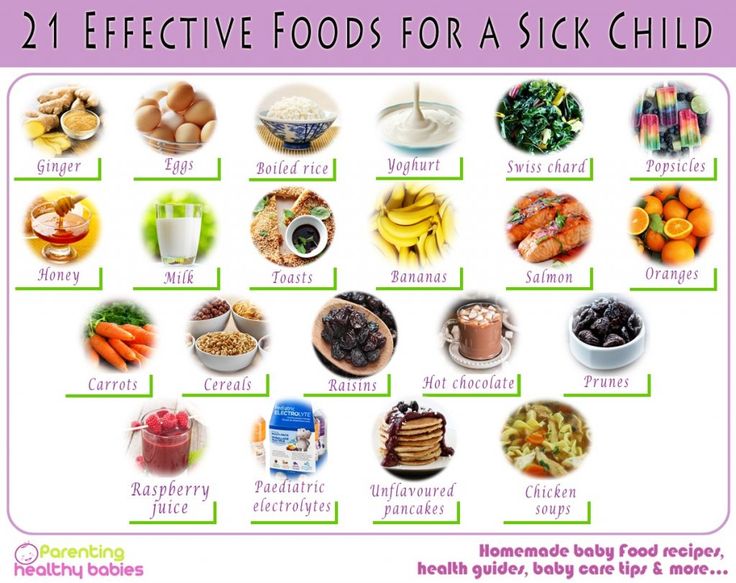 If they can sit up in the high chair, then they might be ready to try their hand at finger foods.
If they can sit up in the high chair, then they might be ready to try their hand at finger foods.
Some guides suggest waiting to introduce baby finger foods until your child has mastered a pincer grasp—the ability to pick up small objects between the thumb and forefinger—but Dietz says this isn’t totally necessary. “Initially when children start to feed themselves, they don’t have a pincer grasp,” he says. “So they’re using their whole hand and putting their hand in their mouth. And that’s fine.”
If you’re waiting for your infant to sprout teeth before moving on from purees, think again. “Babies don’t need teeth to learn to eat solids and learn to chew,” McCormack says. Those strong little gums are perfectly capable of mashing up soft solids—if you’ve ever let baby teethe on your finger, then you have some idea of just how powerful they are!
Baby Finger Food Safety
When choosing the best finger foods for baby—whether you’re starting at 6 months or 9 months—experts agree that it’s best to begin with small pieces of soft food that dissolve easily.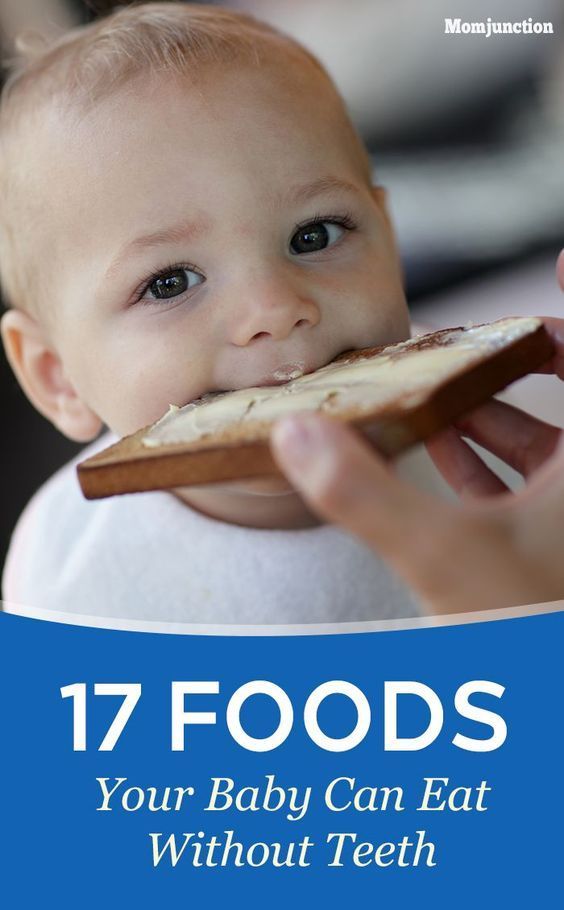
As your infant grows and becomes comfortable eating finger foods, you can branch out, McCormack says. “As a baby develops better tongue patterns to control food pieces as well as more mature chewing, he can better ‘chew’ the foods that break apart, like pieces of fruits and vegetables. A one-year-old can also bite off pieces of food that a 6-month-old can’t.”
Avoid giving baby finger foods that are large, sticky or don’t dissolve easily, because they’re potential choking hazards, Dietz warns. He suggests steering clear of foods like hot dogs, carrots, nuts, grapes, popcorn, candy and globs of peanut butter.
Another thing to keep in mind when you’re picking out the best finger foods for babies is that a lot of adult foods—particularly snacks—can be super salty. “Often parents will doctor a food so it appeals to their tastes, and their taste may have bigger amounts of sodium than a baby’s taste,” Dietz says. When preparing food for baby, leave out the salt whenever possible. (You can always add it separately to your portion if you’re cooking for the family).
(You can always add it separately to your portion if you’re cooking for the family).
How to Introduce New Finger Foods for Baby
When babies first start on finger foods, breast milk and formula will still be their main source of nutrition, followed by purees. You should continue to spoon-feed your child initially, “but during the feeding process, they should also be allowed to feed themselves,” Dietz says. Put some finger food on her high-chair tray and let her try to get it into her mouth in between the spoonfuls of food you’re feeding her. If she gets really frustrated, go ahead and help her out.
Most important, follow your child’s cues and “let your baby be the guide,” McCormack says. If he doesn’t respond positively, take a step back and try again later. But keep in mind that babies often crinkle up their faces when they try something new, which can look like they don’t like something, Dietz says. It can take up to 20 times before they’re used to certain foods. “Parents shouldn’t force food, but they should be persistent in offering,” Dietz says.
McCormack also suggests easing into finger foods by offering thicker purees with a bit of texture to them. “Try alternating bites of the smooth puree with a slightly thicker or mashed food to help your baby get used to the new textures in her mouth,” she says.
Remember, too, that this is a messy process. Parents might want to lay newspaper or an easy-to-clean vinyl tablecloth on the floor, since it’ll be a while (like, years) before your kid manages to get more food in his mouth than on the floor, Dietz advises.
Finally, never leave baby unattended while she’s eating, and keep an eye out for signs of choking. It may be tempting to hold off on introducing finger foods until your child is older, but helping baby develop this skill has multiple benefits, McCormack says, including “development of independence, fine motor skills and self-feeding skills, as well as development of oral patterns to support texture progression.” Whether you start baby finger foods at 6 or 9 months, just follow baby’s lead and let him have fun with it.
Best Finger Foods for Baby
If you’re looking for baby finger food ideas, think about options that are soft, small and easily gummed. Here are a few of the best finger foods for baby to get started—including finger foods for baby with no teeth! While the same finger foods are as appropriate for a 6-month-old as they are for a one-year-old baby, you can begin to offer slightly larger pieces that they can bite off themselves as they become more confident. Stick with these healthy options, and you’ll start baby off on the right path for healthy eating.
Image: The Bump
1. Puffs and dry cereal. Puffs and O-shaped dry cereal are some of the most popular first finger foods for good reason: They let baby practice the pincer grasp by picking up one at a time. And as McCormack explains, they also “mix well with saliva and are easy for the infant to manage in their mouth without choking.”
2. Teething biscuits and lightly toasted bread. Teething biscuits and small pieces of lightly toasted bread are another great starter finger food, since they soften quickly.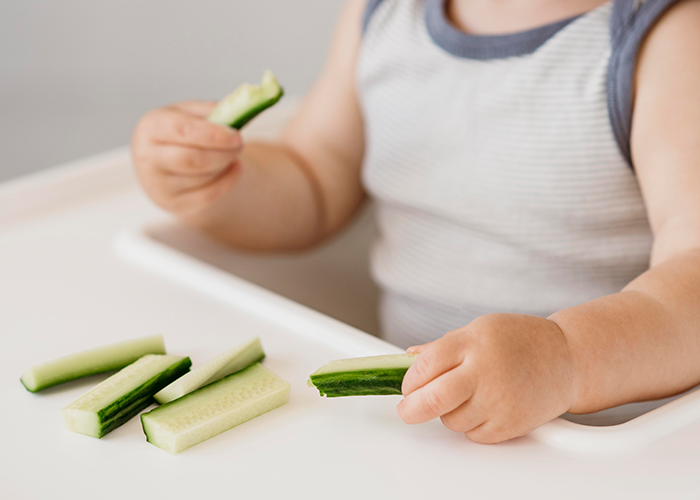 Just note that some breads can turn gummy and stick in baby’s mouth; lightly toast the bread and cut into very small pieces to avoid a choking hazard. As baby gets older (around 9 to 12 months), you can offer slightly larger pieces or serve bread topped with mashed banana or avocado, or a super-thin layer of hummus or peanut butter.
Just note that some breads can turn gummy and stick in baby’s mouth; lightly toast the bread and cut into very small pieces to avoid a choking hazard. As baby gets older (around 9 to 12 months), you can offer slightly larger pieces or serve bread topped with mashed banana or avocado, or a super-thin layer of hummus or peanut butter.
3. Scrambled eggs. Doctors used to advise waiting to introduce eggs, but the AAP now recommends early exposure to potentially allergenic foods. Which is great news, since scrambled eggs are an ideal early finger food! Keep your love of runny yolks to yourself for now, however, and cook those eggs thoroughly, cut into small pieces and avoid adding salt.
4. Soft fruit. Very ripe fruit is naturally soft, making them some of the best finger foods for babies. Ripe banana, peach, watermelon, raspberries, blueberries and cantaloupe cut into small pieces are all great finger food options.
5. Avocado. A rich source of omega-3 fatty acids—which can help boost baby’s brain development—avocados are, like puffs, often one the first baby finger foods, even when your little one has no teeth. Be warned: Avocado can get messy fast, but it’s well worth it (and can result in some hilarious pics for the baby album).
Be warned: Avocado can get messy fast, but it’s well worth it (and can result in some hilarious pics for the baby album).
6. Pasta. Though recipes often recommend cooking pasta al dente, when it comes to feeding baby, you’ll want to slightly overcook it so it’s nice and soft. To start, try small pasta shapes like orzo or mini shells, or cut up fusilli or penne. Initially serve it plain, but as baby is introduced to more foods you can toss the pasta in a little butter, olive oil or low-sodium tomato sauce.
7. Tofu. Whether cooked or uncooked, tofu is a wonderful plant-based source of protein and a perfect finger food for babies. Opt for firm tofu, which is still quite soft, as opposed to soft or silken tofu, which will likely fall apart in baby’s hand and frustrate her.
8. Cooked vegetables. Though it will be a while before baby can hit the crudités platter, cooked vegetables make excellent baby finger foods. To get the most nutrients out of your vegetables, steam or roast them until soft, and, of course, cut them into small pieces. Try sweet potato, carrot, broccoli, cauliflower or beets (opt for yellow beets for less mess) to start. As baby gets bigger, you can offer steamed carrot sticks or peeled, roasted sweet potato wedges.
Try sweet potato, carrot, broccoli, cauliflower or beets (opt for yellow beets for less mess) to start. As baby gets bigger, you can offer steamed carrot sticks or peeled, roasted sweet potato wedges.
9. Cheese. If baby has shown no signs of a dairy allergy, then it’s perfectly safe to introduce soft cubes of cheese as early as 6 months. Opt for small bites of a pasteurized cheese that’s soft but not overly sticky or stinky, like Monterey Jack or cheddar.
10. Beans. Looking for more protein-rich, vegetarian baby finger foods? Try beans. Opt for canned, low-sodium beans for convenience, or soak and cook dry beans yourself to save money (they’ll freeze well too!). When first introducing beans, smash them just a bit between your fingers before serving to baby.
11. Homemade muffins. While store-bought muffins are often loaded with sugar, there are plenty of healthy muffin recipes out there. Use whole-wheat flour, sweeten with applesauce instead of sugar and add healthy ingredients like mashed banana or grated zucchini. Bake in a mini muffin tin or use a standard-size tin, and, once baked, break off into small pieces for baby.
Bake in a mini muffin tin or use a standard-size tin, and, once baked, break off into small pieces for baby.
12. Meat. After soft foods, diced chicken breast and ground beef are pediatrician-approved next-stage finger foods for baby. Just make sure they’re thoroughly cooked and cut into very small pieces.
13. Fish. Fish is another allergenic food that doctors now say can be introduced before baby is a year old. Be sure it’s thoroughly cooked, and opt for a low-mercury fish like flounder, cod or salmon. Most important, make sure to remove any tiny bones.
Please note: The Bump and the materials and information it contains are not intended to, and do not constitute, medical or other health advice or diagnosis and should not be used as such. You should always consult with a qualified physician or health professional about your specific circumstances.
Plus, more from The Bump:
Baby-Led Weaning Basics
Why Variety Matters in Baby’s First Foods
The Dos and Don’ts of Homemade Baby Food
Eating with your hands and not getting fat: a new trend in baby feeding - Parents.
 ru
ru About nutrition
- in fact, it is a continuation of pedagogical complementary foods - a trend that appeared in Russia relatively recently, but has already become widespread. What it is? Pedagogical complementary foods are not an independent complementary feeding system in its traditional sense (it does not contain specific recommendations regarding the sequence of introducing products and their combinations), but a way to introduce a child to “adult” food and table behavior skills. He implies that if the baby shows interest in food on her mother’s plate, she should offer him this food in the amount of a “microdose” (a droplet on the tip of a teaspoon or a piece the size of a pea) without prior grinding. The main slogan of pedagogical complementary foods is: "Put the child at the common table when the whole family is together, and let him choose what he likes." nine0003
Why
Children eat with their hands more conveniently and “tastier” than cutlery, which is why they do it with pleasure.
 But finger food is not just entertainment: there are many advantages to eating with your fingers.
But finger food is not just entertainment: there are many advantages to eating with your fingers. -
Improving the ability to chew. It does not happen that up to a year the baby received only breast milk, and then suddenly began to chew the pieces wonderfully. The baby learns to chew gradually, so it is very important not to miss the age stages of this skill and offer solid foods in a timely manner. nine0003
-
Grasping exercises. By eating with his hands, the child masters the "tweezer" grip (children grab small pieces of food using the thumb and forefinger), which is necessary for the development of fine motor skills. In the future, this will help them perform many exercises in which they need to be able to capture small objects: lay out a mosaic, sculpt, draw, embroider. In addition, the development of a "tweezer" grip prepares the child's hand for writing.
-
Correction of eating behavior. By the age of two, it has already been formed in some way, and if before the diet was scarce and monotonous, when accustomed to the “adult table”, the baby may reject new foods.
 "Finger food" - first from mom's plate, and then from your own - will help the child to harmoniously move on to a common meal.
"Finger food" - first from mom's plate, and then from your own - will help the child to harmoniously move on to a common meal. -
Way of knowing the world around. Eating with hands at an early age has a positive effect on child development in general: the baby receives a lot of information - visual, tactile, olfactory, gustatory and even auditory (foods come in different colors, tastes, textures - they can crunch, squish, etc.). This is very useful: in addition to the fact that the child learns to be independent, he also conducts a kind of identification of dishes on the table. nine0003
-
- Photo
- Compassionate Eye Foundation/Three Images/Getty Images
- Photo
- Kumacore/Getty Images
-
Do not breastfeed your baby: the risk of choking is much lower if the baby is seated across from you in a high chair. nine0003
-
Do not offer food to your baby when he is upset, overexcited, crawling or watching TV: small pieces of food are potentially dangerous - they can easily be put into the nose or ear, and also try to inhale.
 Never leave a child unattended while eating!
Never leave a child unattended while eating! -
For the same reason, do not give him small dense rounded foods: grapes, nuts and raisins, green peas, olives. Cut vegetables and fruits of a dense texture (apples, cucumbers, carrots, celery) into small sticks. nine0003
-
Discard fish: small, thin and elastic bones are very difficult to remove from it.
-
Forget sausages and sausages: they are very hard to chew and swallow.
-
If you use a nibbler, make sure the nets are intact and clean. And, of course, be sure to wash your hands before eating - both children's and your own.
- Photo
- Yiu Yu Hoi/Getty Images
-
Vegetables.
 They must be cooked so that they are soft, peeled and de-seeded. Diced boiled potatoes are a great food to eat with your hands. Small soft cubes of boiled carrots, broccoli, pumpkins are also perfect for a child up to a year old. A treat for older kids: slices of cucumber or sweet pepper - these vegetable sticks are conveniently dipped in various sauces. nine0003
They must be cooked so that they are soft, peeled and de-seeded. Diced boiled potatoes are a great food to eat with your hands. Small soft cubes of boiled carrots, broccoli, pumpkins are also perfect for a child up to a year old. A treat for older kids: slices of cucumber or sweet pepper - these vegetable sticks are conveniently dipped in various sauces. nine0003 -
Fruit. Small cubes of watermelon, melon, ripe banana, pear will do. Cut them into small plates or sticks to make it easier for the baby to bite off.
-
Everything else. Also, soft pasta (tubes, horns, shells, bows), egg yolks from quail eggs and small pieces of soft cheese (tofu, goat or mozzarella), steamed meatballs, pieces of chicken or turkey fillet will be useful and perfect for eating with your hands . Cut pancakes into thin strips - you can dip them directly with your hands in yogurt, sour cream or fruit puree. nine0003
- Association between taste, appearance and tactile sensation of different foods (this will allow you to eliminate the desire to touch food in the future, easily switch to the use of cutlery and learning beautiful eating behavior).
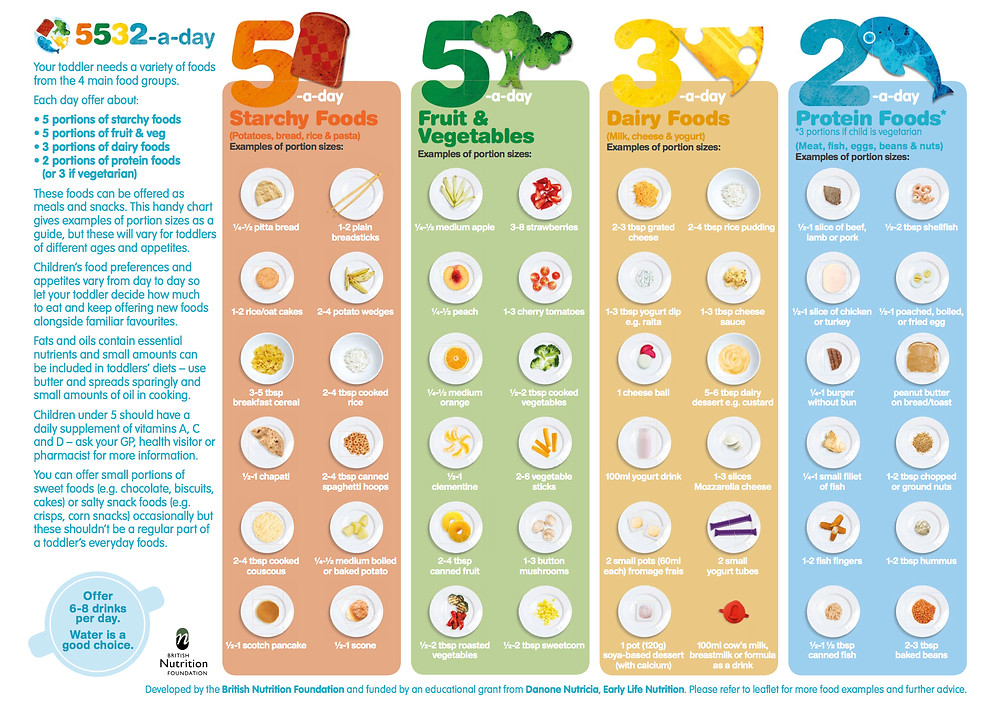
Eat little, baby!
British scientists have proven that "eating with your hands" reduces the risk of obesity in a child.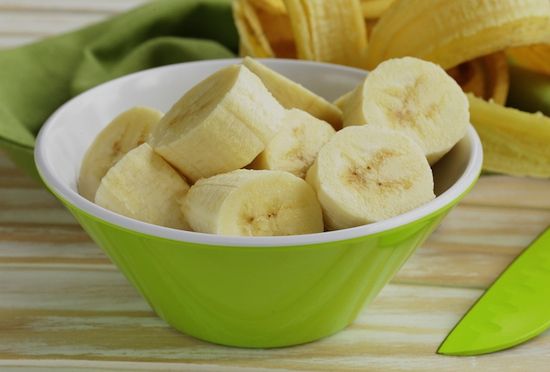 They conducted an experiment in which more than 150 children aged 6 months to 6 years took part. Half of the parents suggested that their children take pieces of solid food from the plate, the rest - fed from a spoon. The results of the study showed that children who joined the common table through finger food were less likely to suffer from overweight in middle and high school age. Domestic doctors do not quite agree with the conclusion of foreign experts: if the child is not persuaded and not blackmailed (“a spoon for mom, a spoon for dad”, “eat - I’ll give you candy!”), He, eating even with the help of cutlery, he will determine for himself the optimum amount of food to eat. The main thing is that high-quality and healthy products are always present on the children's plate. nine0003
They conducted an experiment in which more than 150 children aged 6 months to 6 years took part. Half of the parents suggested that their children take pieces of solid food from the plate, the rest - fed from a spoon. The results of the study showed that children who joined the common table through finger food were less likely to suffer from overweight in middle and high school age. Domestic doctors do not quite agree with the conclusion of foreign experts: if the child is not persuaded and not blackmailed (“a spoon for mom, a spoon for dad”, “eat - I’ll give you candy!”), He, eating even with the help of cutlery, he will determine for himself the optimum amount of food to eat. The main thing is that high-quality and healthy products are always present on the children's plate. nine0003
When
At what age can you give small pieces of food to a baby? As soon as the baby begins to sit confidently without assistance. It’s good if at 4.5 months, under strict parental guidance, he grinds a dry bagel or a piece of apple in a nibbler with his gums. Do not forget that the consistency of the main complementary foods (porridge, mashed potatoes, etc.) should gradually become thicker so that the child has a need to work with his jaws, lips, tongue. Then you can reduce the degree of grinding: use a meat grinder, grater, fork. All this will gradually teach the baby to fully chew food. Usually, from 7 to 12 months, this skill is successfully formed, and at the age of one, if the child received pediatric complementary foods according to age, he may well be fed with food with his hands on his own. nine0003
Do not forget that the consistency of the main complementary foods (porridge, mashed potatoes, etc.) should gradually become thicker so that the child has a need to work with his jaws, lips, tongue. Then you can reduce the degree of grinding: use a meat grinder, grater, fork. All this will gradually teach the baby to fully chew food. Usually, from 7 to 12 months, this skill is successfully formed, and at the age of one, if the child received pediatric complementary foods according to age, he may well be fed with food with his hands on his own. nine0003
“Food with hands” is suitable for children from 7–8 months to 1.5 years. Then the child should make friends with cutlery and learn to get pleasant tactile sensations in other ways.
How many
Food with hands is always present in our diet, because bread, pies, chicken wings, khinkali, desserts like “oriental sweets”, and many other things we eat without cutlery . Therefore, there will always be finger food in the child's diet, and it is not necessary to artificially observe its volume. But it is necessary to accustom the baby to cutlery: at eight months he should eat with a spoon with his mother, and at 1.5 years old he should use cutlery on his own. It is both civilized and more hygienic. nine0003
Therefore, there will always be finger food in the child's diet, and it is not necessary to artificially observe its volume. But it is necessary to accustom the baby to cutlery: at eight months he should eat with a spoon with his mother, and at 1.5 years old he should use cutlery on his own. It is both civilized and more hygienic. nine0003
How to
Be patient: it is not easy to encourage baby food with your hands, because at first more of it will end up on the floor instead of your mouth. Cover the table with oilcloth and use a plate with a suction cup - it will be more difficult for your baby to knock it over. Also, special containers like lunch boxes with internal dividers are good for finger food: arrange the edible pieces in different sections, and let the baby explore their contents.
Safety Instructions
What
A good food to eat with your hands is one that can be broken into small pieces that are easy to chew or even dissolve in your mouth. The main thing is to make sure that the baby will not only be able to easily hold them in his hands, but also will not choke. nine0003
Arrange thick dips of different colors (yellow for cheese, green for spinach or avocado, red for berries) on a plate in circles, imitating a palette. Let the baby mix them with his hands, getting new colors and flavors.
Let the baby mix them with his hands, getting new colors and flavors.
Trying by mouth
Practically all parents know today that it is useful for a baby to touch different objects with his hands from a very early age. The fingertips are equipped with many nerve endings, and stimulating them not only transmits a lot of information to the brain, but also relieves nervous tension. It's safe to say that eating with your hands is soothing. Any tactile sensations have a beneficial effect not only on the nervous system, but, according to some reports, increase immunity. When a baby eats with his hands, he is not so much satiated as he explores unfamiliar objects with his mouth (in tactile terms, the mouth provides him with more effective information than hands). Some children under two years of age retain the need to study objects in this particular form: “Everything is dragged into the mouth,” mothers complain. Nevertheless, at the age of two, a child should be as accustomed to a civilized meal as possible - to be able to use a spoon and a fork.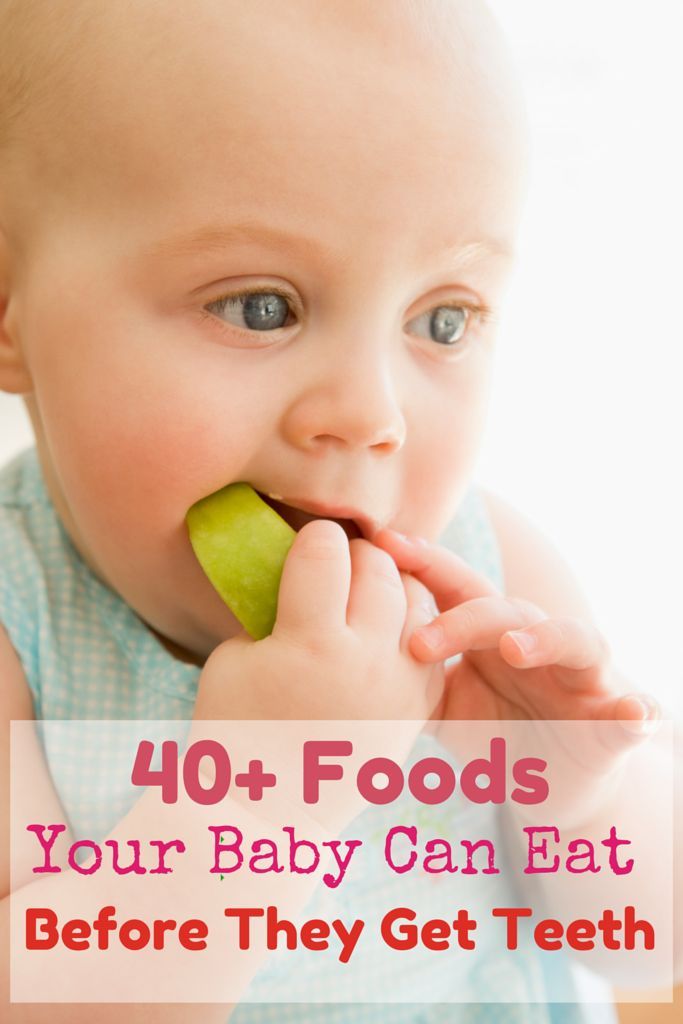 If the baby continues to eat with his hands, this is either from a lack of education, or from a lack of attention and a lack of tactile sensations, which at this age should be replenished in other adequate ways (with the help of mother's hugs, on a carpet with favorite toys). nine0003
If the baby continues to eat with his hands, this is either from a lack of education, or from a lack of attention and a lack of tactile sensations, which at this age should be replenished in other adequate ways (with the help of mother's hugs, on a carpet with favorite toys). nine0003
More useful materials on how to feed your baby - in our channel on Yandex.Zen.
Evgenia Karpovskaya
Eating with hands: why is it for a baby
The author of the article Keshishyan Helena Solomonovna nine0003
1399 views
December 24, 2021
Login or register to save articles and products as favorites
Whatever happens to a child at the age of 1-2 years of their life, these are steps in the growth of their skills, knowledge of the world and, as a result, in their development. Cognition occurs through the development of all the senses, but nevertheless, in the first months of life, the most important are tactile sensations - the child pulls everything into his mouth and feels with his hands, calms down from touch. nine0003
Cognition occurs through the development of all the senses, but nevertheless, in the first months of life, the most important are tactile sensations - the child pulls everything into his mouth and feels with his hands, calms down from touch. nine0003
Food as a tactile sensation
The main tactile sensation is food - first, the feeling of the skin of the mother's breast (or bottle) when sucking, during which there is an extraordinary pleasure from the sensation of warm milk, and then the blissful state of satiety. Even if then pain occurs when digesting food (flatulence, spasms), in the mind of the baby they are not associated with bright positive emotions from feeding.
The development of taste sensations is a gradual process, and we are well aware of situations when a baby who is breastfed perceives any type of complementary foods very poorly - he does not like them, since taste buds "know" only milk and give a negative taste response to other types of food . nine0003
nine0003
That is why it is advisable for the baby to offer already from 4-5 months, before the introduction of complementary foods, trial introductions of products through a nibbler and similar devices.
"Introduction" to food
But now the child is already receiving complementary foods, sitting at the table, and the mother feeds him from a spoon - a perfectly correct picture. The child's hands are not busy, and they require constant tactile familiarity with everything around. And the food offered to him is of the greatest interest. In his mind, “one link is missing” - here he gets delicious food - he feels it, it is associated with certain dishes and a spoon, with the sounds of the voice of a loved one who gives this food. But… what is she like? And the child reaches for a plate or a jar with his hands, wants to take a spoon, kneads the food in his hands. From the outside and from the point of view of an adult, it is very ugly, dirty, not aesthetically pleasing, and not hygienic. From the point of view of the child, this is the knowledge and associative connection of the product, its taste, smell, appearance and sensation. The sooner the child masters all these connections, the sooner he will lose interest in “getting dirty and being washed hands and faces by adults”. nine0003
From the point of view of the child, this is the knowledge and associative connection of the product, its taste, smell, appearance and sensation. The sooner the child masters all these connections, the sooner he will lose interest in “getting dirty and being washed hands and faces by adults”. nine0003
Why is it important to touch food
Understanding this, as well as the fact that the process of eating is one of the main in the formation of various developmental skills, parents should not only allow the child to feel the food, but also offer during the snack, or even the main meal, products that can be eaten with hands - pieces of fruit, vegetables, cookies, not to deprive the right to suck on a chicken leg, and so on, bringing more variety to these options as the child grows older. nine0003
What does it give the baby:

